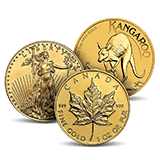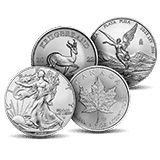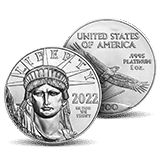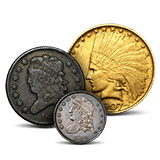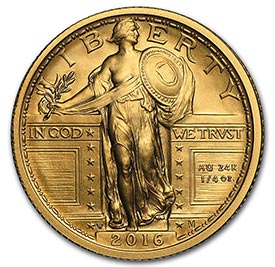
1916 Centennial Series Coins (2016)
Commemorative coins have a long and storied history with origins dating all the way back to Classical Greece. From the Mughals to the West Germans, governments have created special coins created to memorialize great people and events. Commemoratives are collectibles, and usually are not made for circulation (though they may be in some cases, such as the 50 State Quarters or Washington quarter). These coins are almost always historically significant and are usually issued either for commemorations or to collect money for monuments or celebrations. Before 1982, U.S. commemorative coins were often created by a commission in charge of the event. The coins would be sold for a premium over the regular price of the coin to collect seigniorage. After 1982 commemoratives came through the U.S. Mint. Some of these still had the old Precious Metal content of previous years while others were only clad coins.
1916 Centennial Series Coins Design
Gold commemorative coins were not as common, but there were several issues that were struck between 1903 and 1926. These were struck as Gold dollars, quarter eagles and fifty-dollar Gold pieces. Most of them were Gold dollars. Once the Mint began making commemorative coins again in 1982, Gold was back on the table, with the first issue coming in 1983 with the Olympic Torch Bearers Gold ten-dollar coin. This was the first Gold piece issued in the United States in over 50 years, and the first coin to ever have a W mint mark for West Point.
Modern issues were sold after 1982 and did not have the same selling structure as previous commemoratives. These were unique, but they were not sold by a commission. Instead, they came directly from the U.S. Mint, but for the same purpose of collecting seignorage. There are exceptions (such as the Mount Rushmore Golden Anniversary, which was split between the Treasury and the Mount Rushmore National Memorial Society of Black Hills, South Dakota), but most fall under this pattern. These coins have smaller mintages than commemorative coins of the past and collectors are more willing to take them on.
Commemorative half dollars in the modern-day are minted from clad cupro-nickel. Dollars were 90% Silver from 1983 through 2018, but from 2019 through the present they have been 99.9% Silver. Gold coins are 90% Gold, though there are some unique bimetallic issues with Gold and Platinum and at least one unique issue with 85% Silver, 14.8% Copper and .2% zinc.
The 1916 Centennial Series is something of an exception to this rule. These coins are minted from 99.99% Fine Gold, and they come in a set of three: the Liberty Walking half dollar, the Standing Liberty quarter and the Mercury dime. All three are the 1916 designs that were created in Teddy Roosevelt’s coin refresh efforts.
Roosevelt was one of the major forces pushing for new, more artistically interesting coins, and he got his way in 1916 when these three coins were released. These designs are widely praised by numismatists and considered classics of U.S. coinage, and the 2016 reissue was a homage to the originals.
Historical Significance
These commemorative coins are specifically tied to numismatic history, and as such have distinctly more value for collectors they might for laymen. These coin designs were classics and the homage to them is a low mintage. High-quality examples of these coins are issues many will want to collect.
Numismatic Value
Commemorative value can be volatile. Many of them had low mintages and surviving populations, which can drive prices up dramatically. Some issues were firsts, including the first U.S. coin to have a U.S. president and the first U.S. coin to have a living president. Modern commemoratives have low mintages but are less expensive to collect than older ones, and clad coins do not have the intrinsic value of the Precious Metal supporting their price. Commemorative value isn’t completely stable and is worth checking on a more regular basis than some other coins.
If you are searching for an elusive commemorative, explore our unparalleled selection of unique coins today.

PCGS Products
You need the most up-to-date pricing on your coin collection. That’s why APMEX has partnered with PCGS, the premier grading authority in the world of rare coins, to bring you constantly updated pricing on collectibles and rarities. PCGS has been grading coins since 1986, bringing consistent standards of quality to a fractured industry. In the years since they have remained a source of reliable information on the current collectible and rare coin market.

